Human Orbital Spaceflights
![]()
International Flight No. 219STS-98Atlantis (23)102nd Space Shuttle missionUSA |
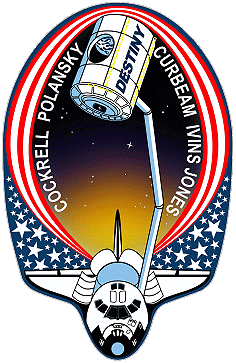 |
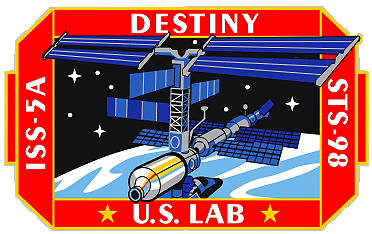 |
![]()
Launch, orbit and landing data
walkout photo |
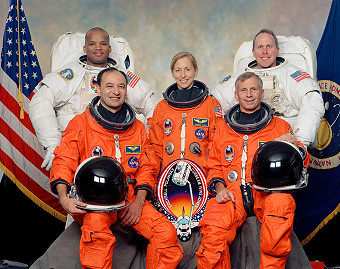 |
|||||||||||||||||||||||||||||||||
alternative crew photo |
alternative crew photo |
|||||||||||||||||||||||||||||||||
alternative crew photo |
||||||||||||||||||||||||||||||||||
alternative crew photo |
||||||||||||||||||||||||||||||||||
Crew
| No. | Surname | Given names | Position | Flight No. | Duration | Orbits | |
| 1 | Cockrell | Kenneth Dale "Taco" | CDR | 4 | 12d 21h 20m 03s | 202 | |
| 2 | Polansky | Mark Lewis "Roman" | PLT, backup-EV, IV-1 | 1 | 12d 21h 20m 03s | 202 | |
| 3 | Curbeam | Robert Lee, Jr. "Beamer" | MS-1, EV-1 | 2 | 12d 21h 20m 03s | 202 | |
| 4 | Ivins | Marsha Sue | MS-2, RMS, PLC, FE | 5 | 12d 21h 20m 03s | 202 | |
| 5 | Jones | Thomas David | MS-3, EV-2 | 4 | 12d 21h 20m 03s | 202 |
Crew seating arrangement
|
 |
|
||||||||||||||||||||||||
Hardware
| Orbiter : | OV-104 (23.) |
| SSME (1 / 2 / 3): | 2052-2A (3.) / 2044-2A (5.) / 2047-2A (5.) |
| SRB: | BI-105 / RSRM 77 |
| ET: | ET-106 (SLWT-11) |
| OMS Pod: | Left Pod 03 (27.) / Right Pod 04 (23.) |
| FWD RCS Pod: | FRC 4 (23.) |
| RMS: | 202 (6.) |
| EMU (launch): | EMU No. 3005 (PLSS No. 1005) / EMU No. 3009 (PLSS No. 1009) / EMU No. 3015 (PLSS No. 1015) |
| EMU (landing): | EMU No. 3009 (PLSS No. 1009) / EMU No. 3015 (PLSS No. 1015) |
Flight
|
Launch from Cape Canaveral (KSC) and
landing on the Edwards
AFB, Runway 22.
The launch was scrubbed on January 19, 2001 due to technical problems. This forced a rollback to the VAB for booster separation cable inspection. Mark Lee was scheduled to fly as Mission Specialist 1 on his fifth trip to space, but due to undisclosed reasons, he was removed from this flight. He was replaced by Robert Curbeam. The primary objective of STS-98 (ISS-06-5A Lab "Destiny"), International Space Station Assembly Mission 5A, was to deliver and install the U.S. Destiny Laboratory onto the ISS. The centerpiece of research on this world-class scientific orbiting outpost, this workshop in space support experiments and studies in cancer, diabetes and materials, just to name a few. The aluminum U.S. laboratory module is 28 feet (8.5 meters) long and 14 feet (4.3 meters) wide. It is comprised of three cylindrical sections and two endcones that contain the hatch openings through which astronauts can enter and exit the module. Destiny was mated to the forward port of Unity. In Destiny are five systems racks that provide life-sustaining functions on board including electrical power, cooling water, air revitalization, and temperature and humidity control. Each rack weighs about 1,200 pounds (544 kg). Six additional racks were flown to Destiny on STS-102. Four standoffs provide raceways for module utilities - interfaces for ducting, piping, and wiring to be run to/from the individual racks and throughout the Lab. Twelve racks that provide platforms for a variety of scientific experiments will follow on subsequent missions. In total, Destiny hold 23 racks - six each on the port and starboard sides and overhead, and five on the deck. Astronauts can work inside the pressurized facility to conduct research in numerous scientific fields. Scientists throughout the world can use the results to enhance their studies in medicine, engineering, biotechnology, physics, materials science, and Earth science. Each of the two berthing ports on Destiny contains a hatch. The aft hatch (hatch to Unity) was opened and remain open (unless a situation arises requiring a module to be isolated). The forward hatch is used as the main access to the orbiter on future missions until Node 2 arrives. Each hatch has a window. The hatches can be opened or closed from either side. The hatches have a pressure interlock feature, which prevents the hatch from being opened if there is a negative pressure across the hatch (higher pressure on the outside of the hatch). Atlantis' rendezvous with the International Space Station began with its precisely timed launch from the Kennedy Space Center in Florida. The primary pre-rendezvous activities included a check-out of the orbiter's remote manipulator system, or robot arm, (RMS), the extravehicular mobility units (EMUs) or spacesuits, the Ku-band antenna, the orbiter docking system (ODS), and the ground command system. The final phase of rendezvous operations began about three hours prior to Atlantis' docking with the ISS. Atlantis approached the ISS from below, in what is referred to as a plus-R bar approach, to minimize the effects of jet thruster firings on the station and its solar arrays. About 40 minutes before the terminal initiation burn (Ti burn) when Atlantis moved within 135,000 feet (41,148 km) of the station, the shuttle's rendezvous radar system was activated to provide supplemental navigation information. Prior to initiating the Ti burn, the crew powered on the ODS and activated Atlantis's docking lights. A series of course correction burns brought Atlantis to a point almost directly below and behind the station, at which point Commander Kenneth Cockrell initiated the manual portion of his approach to the ISS. Atlantis intercepted the R-bar about 700 feet (213.4 meters) below the station. Kenneth Cockrell slowly moved Atlantis to a point about 600 feet (182,9 meters) below the station before performing a 180-degree yaw maneuver to position Atlantis in a "tail forward" attitude for the final approach and docking. As Kenneth Cockrell gently moved Atlantis toward the station, the shuttle held stationkeep at distances of 170 feet (51.8 meters) and 30 feet (9.14 meters) before initiating the final approach and docking. Solar arrays on the Zarya and Zvezda modules and the recently-installed P6 solar arrays were feathered and locked at a predetermined angle, to limit the induced loads from shuttle thruster firings. Atlantis docked on February 09, 2001 with Pressurized Mating Adapter (PMA) 3 on the downward-facing port of the Unity module. At initial contact and capture, the ISS and Atlantis went to free drift to avoid imposing excessive loads on the orbiter docking system (ODS). After capture, light-emitting diodes on PMA-3 blinked confirming the ISS was in free drift. The crew was able to see the red indicators through the overhead window on Atlantis's aft flight deck and verify that the ISS was in the free-drift mode before beginning the automatic rigidization and retraction process and closure of the capture latches between the two docking hatches. Once a "hard dock" was confirmed, the ODS was deactivated, solar arrays resumed sun tracking, and the Atlantis-ISS complex maneuvered to the mated attitude. Hatches between Atlantis and the ISS were opened about two hours after docking to allow the Expedition One and STS-98 crews to greet one another. After the greeting and some initial cargo transfer, the hatches were closed and Atlantis' cabin pressure was lowered in preparation for the spacewalks, which began the next day. Throughout a week of docked operations, the hatches were opened and closed to support the transfer of supplies and three scheduled spacewalks to outfit the Destiny laboratory module. Mission Specialist Marsha Ivins used the shuttle's robotic arm to attach Destiny to the forward port of Unity. Over the course of three scheduled spacewalks, Mission Specialists Thomas Jones and Robert Curbeam performed external outfitting and connect umbilical cables to provide power and data capability between Destiny and the space station. Following Destiny's installation to Unity, Marsha Ivins once again used the robot arm to relocate Pressurized Mating Adapter 2 (PMA-2), which was moved to a temporary location to allow the installation of Destiny. She then removed PMA-2 from its temporary location on the Z1 Truss and attached it to Destiny's forward Common Berthing Mechanism (CBM). At that point, Commander Kenneth Cockrell issued a series of computer commands from the aft flight deck of Atlantis to command the final latching and berthing operations. The first EVA was performed by Thomas Jones and Robert Curbeam on February 10, 2001 (7h 33m). They went to the payload bay of Atlantis where they disconnected cables and removed protective covers from the outside hatch of Destiny. Once at the installation site and after Destiny had been securely installed, the pair began connecting power and data cables. The overall objective was to mechanically attach the Destiny laboratory to the station and then connect electrical, computer and cooling lines between the lab module and station. The spacewalk was planned to prepare the laboratory to be entered by both the shuttle and station crews for the first time on the following day to begin its activation. Shortly before Thomas Jones and Robert Curbeam began the spacewalk, astronaut Marsha Ivins latched Atlantis' robotic arm onto a capture fixture on one of the station's cone-shaped shuttle docking ports, called Pressurized Mating Adapter 2 (PMA-2), which occupied the berthing mechanism to which the Destiny lab must be attached. Before the spacewalkers left the airlock, the shuttle crew sent commands to release the bolts holding PMA-2 to the station, and Marsha Ivins moved it from its berth, clearing the way for attaching Destiny to that berthing mechanism on the station's Unity connecting module. Thomas Jones and Robert Curbeam began the spacewalk working in separate locations. Robert Curbeam's first task was to disconnect umbilicals between Atlantis and Destiny that had powered heaters on the module while in the shuttle payload bay. Next, he removed covers, in place to prevent contamination during launch, from the Destiny lab's berthing mechanism at the aft end of Atlantis' payload bay. Meanwhile, Thomas Jones climbed up the station to the first truss segment, called the Z1 Truss, almost 40 feet (12.2 meters) above Atlantis' cargo bay. On the Z1 Truss, Thomas Jones guided Marsha Ivins' work with the robotic arm, providing verbal cues to assist in aligning PMA-2 with a temporary storage location on the truss. Once properly aligned, Thomas Jones then manually latched PMA-2 in place to the truss, temporarily out of the way of ongoing activities to attach the Destiny lab. Next, as Marsha Ivins latched the arm onto Destiny, lifted it from the shuttle cargo bay and rotated it into position to be attached to the station, the two spacewalkers worked farther up the station truss to prepare the station's starboard early cooling system radiator to be outstretched later in the mission. Then, they released gimbal locks on a station communications antenna in preparation for the later activation of that system. When Marsha Ivins maneuvered Destiny to its berthing port on Unity and the crew sent commands for the berthing system to bolt together, Thomas Jones and Robert Curbeam stand by to assist if needed. Upon successful activation of Destiny's systems, both the STS-98 crew and the Expedition One crewmembers entered Destiny and began outfitting the lab. The second EVA by Thomas Jones and Robert Curbeam occurred on February 12, 2001 (6h 50m). They went outside and assisted the robot arm operator with removing the Pressurized Mating Adapter 2 (PMA-2) from the Z1 Truss segment and installing it onto the forward end of the Destiny laboratory. Once that task was complete Thomas Jones and Robert Curbeam moved to a location on the Destiny lab and installed a Power Data and Grapple fixture and video signal converter, to be used with the Canadarm2. During the second spacewalk the PMA-2 shuttle docking port was relocated from the temporary position on the station truss where it was placed during the first spacewalk to a permanent location at the forward end of the Destiny lab. Thomas Jones and Robert Curbeam also attached various equipment and fixtures to the exterior of the new module. After Marsha Ivins had latched Atlantis robotic arm onto PMA-2, Thomas Jones manually loosened the latch that held it to the temporary stowage location on the station. While Thomas Jones was working at the point on the station truss, Robert Curbeam's first task was to remove covers from the berthing mechanism at the forward end of the lab. Once Thomas Jones had released the temporary latch, Marsha Ivins maneuvered PMA-2 to the lab's forward berthing mechanism and attached it there, where it will serve as the primary shuttle docking location for most missions to come. Next, Thomas Jones installed thermal covers on the Destiny's four trunnions, the pins which held the module in the shuttle cargo bay during launch, and attached the exterior portion of a vent that will be used by the station's life support systems. Robert Curbeam installed a slidewire along the length of the lab's exterior that was used to ease the tether work required by future spacewalkers as they move up and down the length of the lab. Robert Curbeam also installed several foot platform mounts and handrails. Thomas Jones installed a non-propulsive vent to Destiny's Pressure Control Assembly (PCA), part of its environmental control and life support system. The next major task for both spacewalkers was to install the future connection point for the station's robotic arm to Destiny's exterior, preparing for the launch of that arm on shuttle mission STS-100 later in 2001. Marsha Ivins maneuvered the robotic arm into position for Thomas Jones to install a foot platform at its end in preparation for his work with the arm connection point, called a Power and Data Grapple Fixture (PDGF). Then, working from the arm foot platform, Thomas Jones released the PDGF from its launch location in Atlantis' cargo bay and carried it to the position where it was attached to Destiny. Meanwhile, Robert Curbeam was working at the attachment location on Destiny, removing two portions of the modules debris shielding to prepare to make electrical and computer connections for the PDGF. Thomas Jones then installed the fixture and both spacewalkers replaced the lab debris shields. The third and final EVA by Thomas Jones and Robert Curbeam was conducted on February 14, 2001 (5h 25m). Both spacewalkers attached a spare communications antenna to the International Space Station's exterior. They also double-checked connections between the Destiny lab and its docking port, released a cooling radiator on the station, inspected solar array connections at the top of the station and tested the ability of a spacewalker to carry an immobile crew member back to the shuttle airlock. The third spacewalk attached a spare S-band communications antenna and equipment, called the S-Band Antenna Support Assembly (SASA), to the station; installed an exterior shutter on the Destiny lab window; and connected electrical and data lines between the PMA-2 shuttle docking port and Destiny. The first task on the third spacewalk was to remove the spare SASA from Atlantis' cargo bay and attach it to a stowage location on the exterior of the station's lower truss segment, the Z1 Truss. For that task, Robert Curbeam was in a foot platform at the end of the shuttle's robotic arm and Thomas Jones assisted from the station and shuttle exterior. Next, the two spacewalkers worked together to install an outside shutter on the Destiny lab window. The two spacewalkers installed the shutter and its associated gearbox and then removed a soft cover of insulation that protected the window during launch. They then attached electrical and data connections between the PMA-2 shuttle docking port and the Destiny module. The connections will allow shuttle power and commands to reach the station on future missions, when PMA-2 becomes the primary shuttle docking location. The ISS crew and ground controllers performed some activation and checkout tasks of the laboratory after the orbiter crew ingress is complete. The ground commanded a checkout of the Internal Video Distribution Subsystem Orbital Replacement Units (ORUs). As there is no video capability on this mission, this will be a functional checkout of the equipment to verify that it survived launch in good shape. The ground also performed a health and status check of the Ku-band radio frequency group. Once again, this was a health check of the ORUs because there was not any Ku-band capability until Mission 5A.1. The ISS crew inspected the wastewater tank in Destiny to verify there are no leaks. Other activation procedures that were performed by the ISS crew after Atlantis left, included the activation and checkout of the water vent system, inhibiting the water vent system, and activation and checkout of the vacuum vent system. The ISS crew also installed a Pressure Control System extension duct to assist the flow of air through the PCA. The second in a series of low-cost biological protein crystal growth experiments was transferred to, and conducted aboard, the International Space Station, again used the Enhanced Gaseous Nitrogen Dewar (EGN). Scientists anticipate that analysis of the human and other proteins that make up the payload may contribute to their understanding of gene function and help uncover the genetic roots of diseases. As part of a pilot education program, the payload also contains protein samples loaded by high school students and teachers from Alabama, California, Florida, Michigan, Tennessee and Texas. In preparation for the undocking the STS-98 crew once again powered-up the orbiter docking system, turned on the shuttle docking lights, terminated all OIU operations, and enabled the shuttle's navigational aids. Following its undocking, Pilot Mark Polansky slowly backed Atlantis away from the ISS at the rate of about 1/10 of a foot-per-second (3 centimeters per second) before beginning a flyaround. Atlantis was moved to a point about 450 feet (137.2 meters) below the station before beginning a tail-forward circuit of the station, arriving once again at a position approximately 450 feet (137.2 meters) below the station. At that point, Mark Polansky performed a final separation burn to move Atlantis away from the station. Once Atlantis was about 30 feet (9.14 meters) away from the station, the Expedition One crew activated the station's attitude control systems. The Zvezda module then maneuvered station to its normal orientation for orbital operations, the solar arrays were commanded to resume sun tracking, and the station docking system and lights were deactivated. Due to bad weather at the Kennedy Space Center the landing was delayed two days and the Atlantis was diverted to the Edwards AFB. |
EVA data
| Name | Start | End | Duration | Mission | Airlock | Suit | |
| EVA | Jones, Thomas | 10.02.2001, 15:50 UTC | 10.02.2001, 23:24 UTC | 7h 33m | STS-98 | Endeavour - ISS | EMU No. 3005 |
| EVA | Curbeam, Robert | 10.02.2001, 15:50 UTC | 10.02.2001, 23:24 UTC | 7h 33m | STS-98 | Endeavour - ISS | EMU No. 3009 |
| EVA | Curbeam, Robert | 12.02.2001, 15:59 UTC | 12.02.2001, 22:49 UTC | 6h 50m | STS-98 | Endeavour - ISS | EMU No. 3009 |
| EVA | Jones, Thomas | 12.02.2001, 15:59 UTC | 12.02.2001, 22:49 UTC | 6h 50m | STS-98 | Endeavour - ISS | EMU No. 3005 |
| EVA | Jones, Thomas | 14.02.2001, 14:48 UTC | 14.02.2001, 20:13 UTC | 5h 25m | STS-98 | Endeavour - ISS | EMU No. 3005 |
| EVA | Curbeam, Robert | 14.02.2001, 14:48 UTC | 14.02.2001, 20:13 UTC | 5h 25m | STS-98 | Endeavour - ISS | EMU No. 3009 |
Photos / Graphics
 |
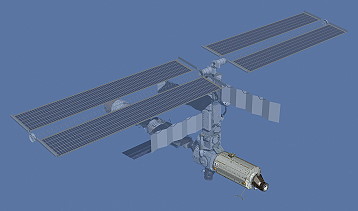 |
 |
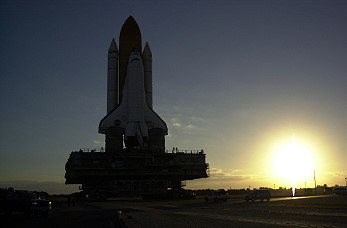 |
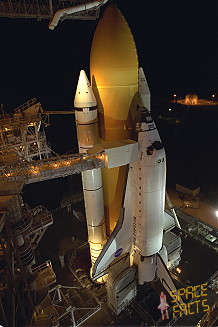 |
 |
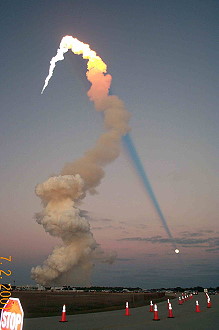 |
 |
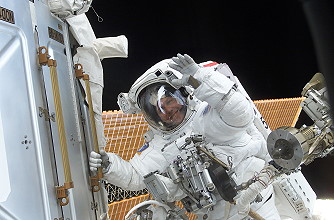 |
 |
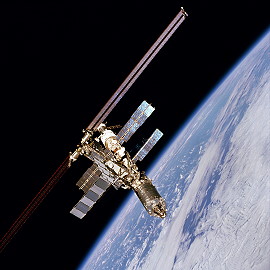 |
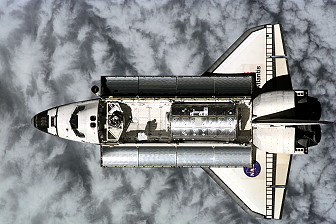 |
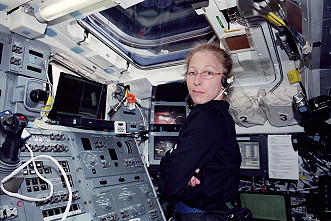 |
 |
 |
 |
 |
 |
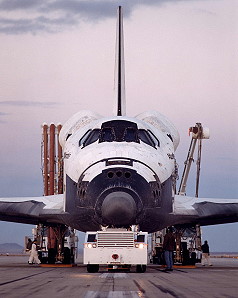 |
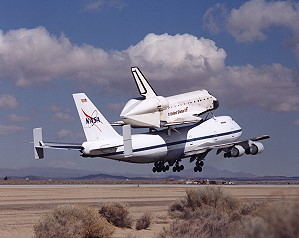 |
more EVA photos |
|
| © |  |
Last update on September 11, 2020.  |
 |